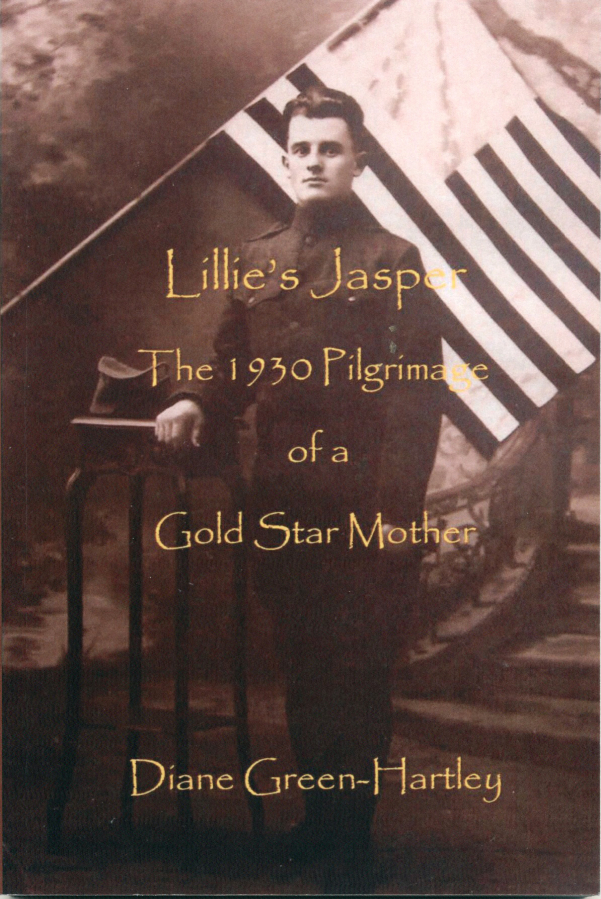Lillie Green and her son exchanged dozens of letters after he entered the Army in 1917. In the summer of 1918, several of the envelopes she had addressed to Pvt. Jasper Green came back to Greenleaf, Idaho, with a heartbreaking word stamped in red.
Deceased.
The 24-year-old soldier had been gravely wounded on July 22, 1918, in one of the pivotal battles of World War I. Jasper died a month later, even as Lillie and other family members continued to send him letters.
“They were writing to him, and they didn’t know he was gone,” said Diane Green-Hartley, Lillie’s great-granddaughter.
That was not the end of Lillie’s writings, however. In 1930, she became one of 6,654 American mothers and widows who visited the graves of their sons and husbands in Europe.
Lillie Green kept a diary during her journey, describing where she and her fellow Gold Star women went and what they saw.
The diary and the WWI letters — almost 100 years old — plus other family keepsakes help tell a little-known chapter of American history. Green-Hartley wove them into an account of her great-grandmother called “Lillie’s Jasper: The 1930 Pilgrimage of a Gold Star Mother.”
Keeping her story alive
The book started out as an exercise in preserving the diary of Lillie’s trip.
“My parents knew about its existence, and they knew it was a good story, and they asked me to type it,” the author said recently in her Hazel Dell home.
Green-Hartley wasn’t sure that she had enough material for an actual book.
“My main goal was to save the story from turning into dust in some attic,” she said.
Then she came across the letters from Jasper and a trunk with Lillie’s belongings, including photos and souvenirs from France, and even her Gold Star Mother medal.
Then she knew she had a story to tell.
It started when Jasper Green was working as a shepherd in the spring of 1917 at a location he jokingly called “Perpendicular, Idaho.”
After he was drafted into the Army, Pvt. Green went to France and helped blunt Germany’s final offensive. The Germans launched the Second Battle of the Marne on July 15; Green was wounded on July 22.
“It was the Germans’ last push,” Green-Hartley said. “My great-uncle played a role in that.”
‘Not allowed to suffer’
After the family was officially notified by the War Department, a letter from a Red Cross official provided a few more details about Pvt. Green:
“He was brought to the American Red Cross Military Hospital No. 1, on July 22nd, suffering from severe gunshot wounds. … He died on Aug. 22nd. … His nurse tells me that he was not allowed to suffer.”
Lillie Green’s role in the saga expanded in 1930, after the nonprofit Gold Star Mothers group was organized; the War Department paid for voyages to Europe for 6,654 women from 1930 to 1933.
The Idaho woman was among the first Gold Star women to make the trip. Her group arrived in Paris on July 6, 1930.
“They had ID cards printed in English and French, in case the ladies got lost,” Green-Hartley said.
Lillie visited Jasper’s grave at Suresnes Cemetery — just outside the French capital — on July 9.
Officials were concerned that the pilgrimages might be too much for some of the women. They feared that some of the mothers — most were 60 or older — would be overcome by grief and collapse at their sons’ grave sites.
That almost never happened, Green-Hartley learned.
Still, a couple of entries in Lillie’s diary hinted at the emotions of the women. After a July 7 ceremony at the Arc de Triomphe, she wrote: “Many Mothers cried, but I managed to keep up courage.”
The cemetery visit on July 9 was an emotional day.
‘Hard for all of us’
“We were given beautiful wreaths to put on the graves of our sons. It was hard for all of us,” Lillie wrote.
And there was one aspect of her great-grandmother’s pilgrimage that brought Green-Hartley to tears. It was an echo of a classic WWI poem written by a Canadian army doctor, Lt. Col. John McCrae:
“In Flanders Fields the poppies blow
Between the crosses row on row …”
Lillie Green’s 1930 itinerary included visits to other sites, including a memorial at the Belleau Wood battlefield. When the American women visited, officials let them pick poppies, Lillie Green told a reporter after returning home.
When the Vancouver woman went through some of her great-grandmother’s keepsakes, she opened a guidebook that was a souvenir of the Belleau Wood visit. She found a dried red poppy that Lillie had pressed between its pages more than 85 years ago.
“It made me get teary-eyed,” Green-Hartley said.




